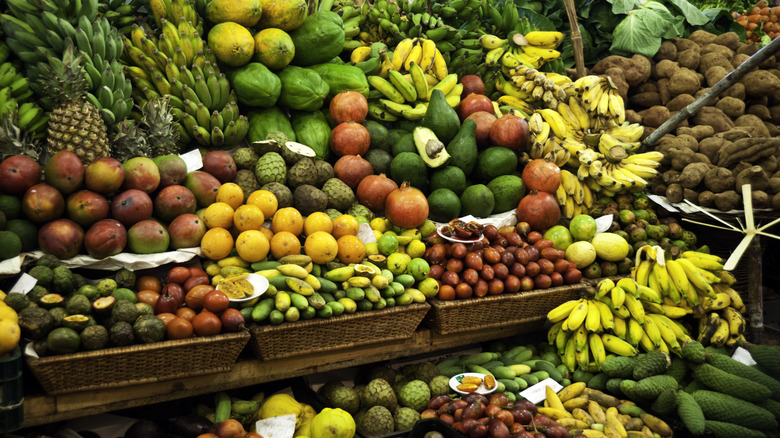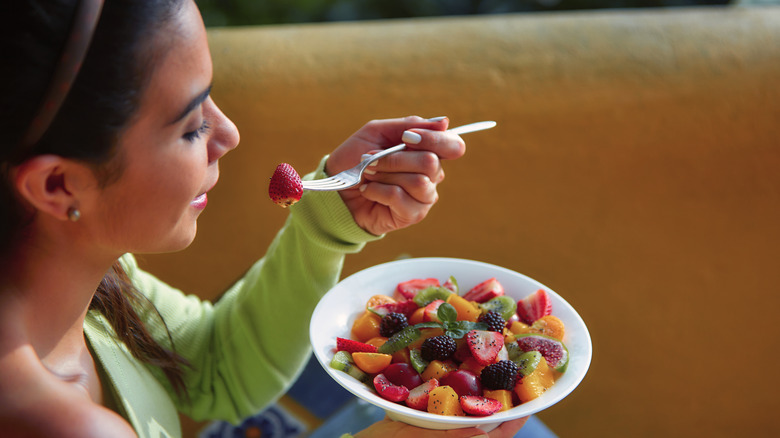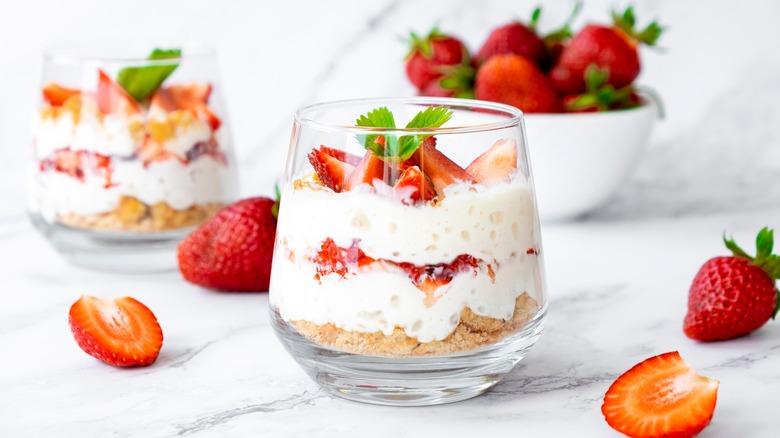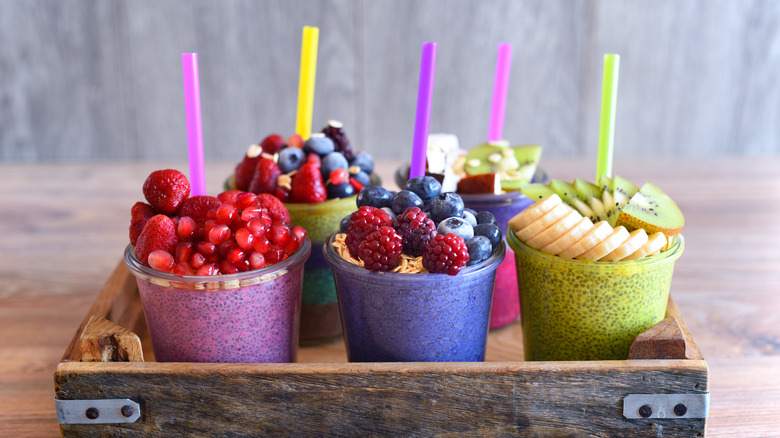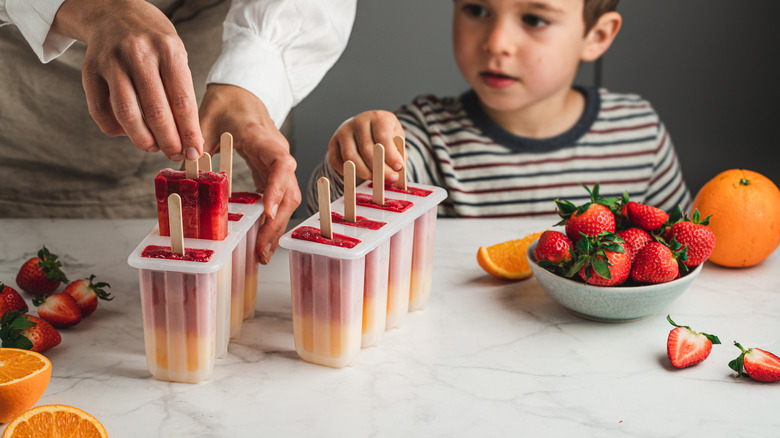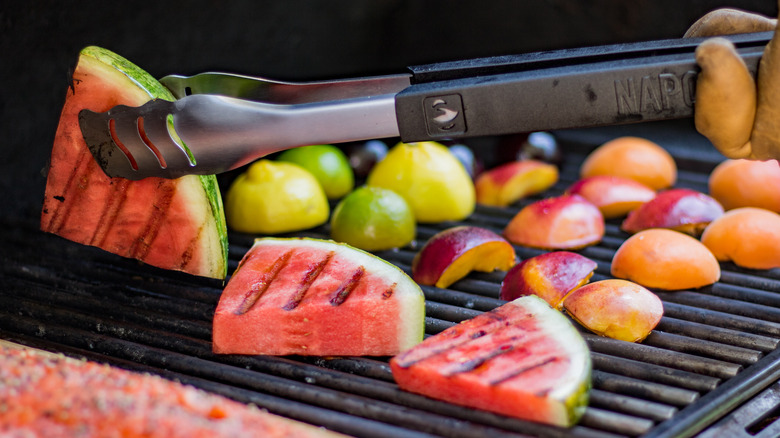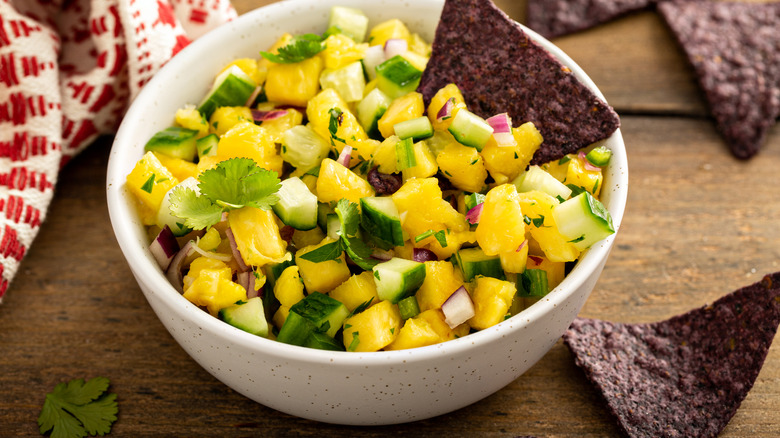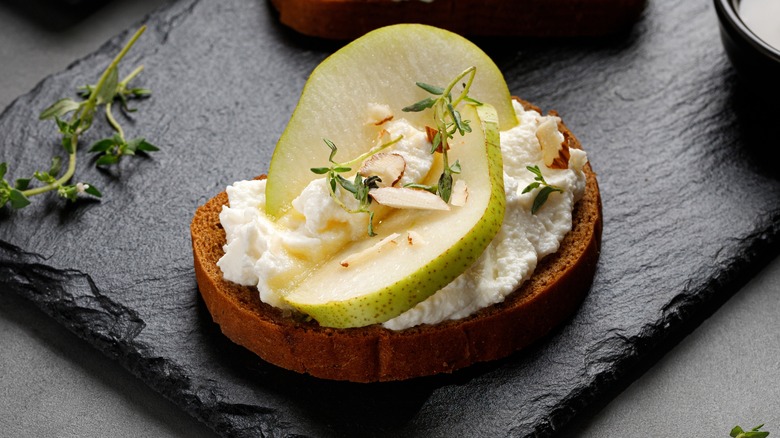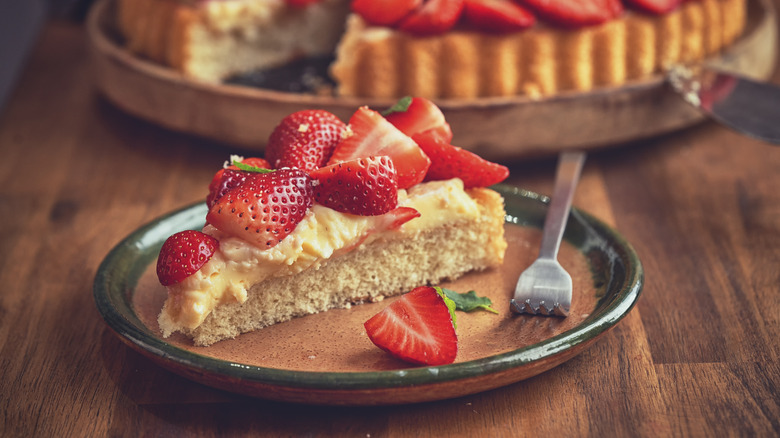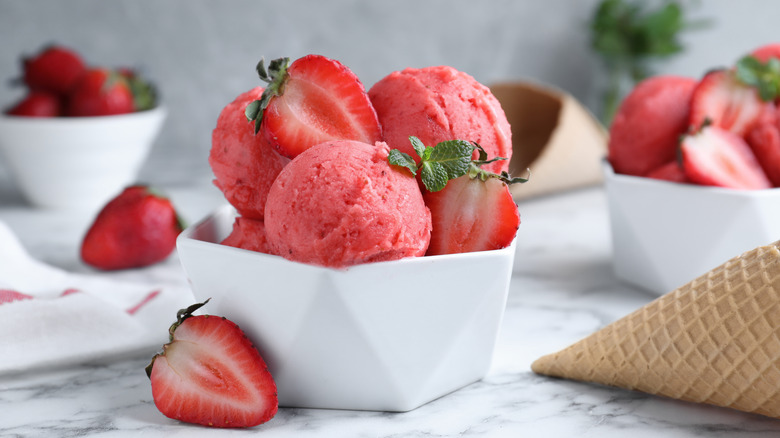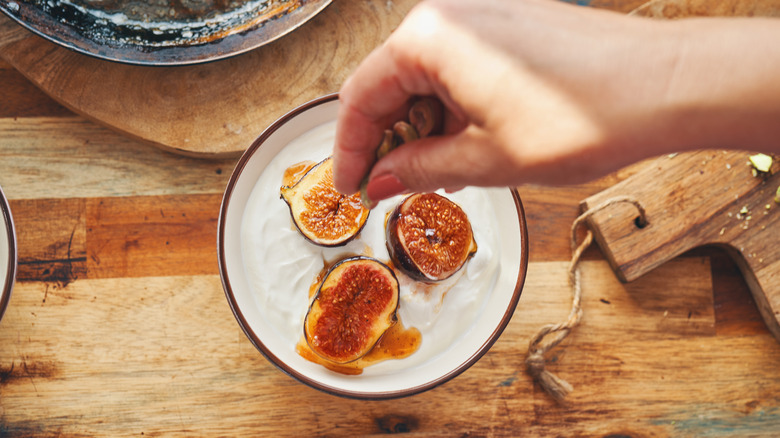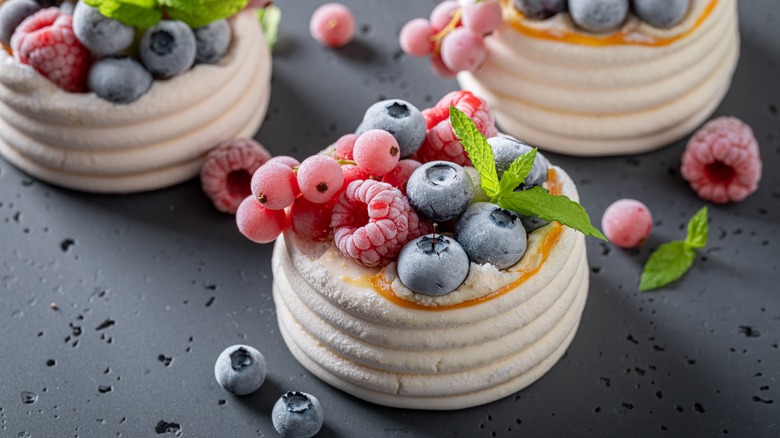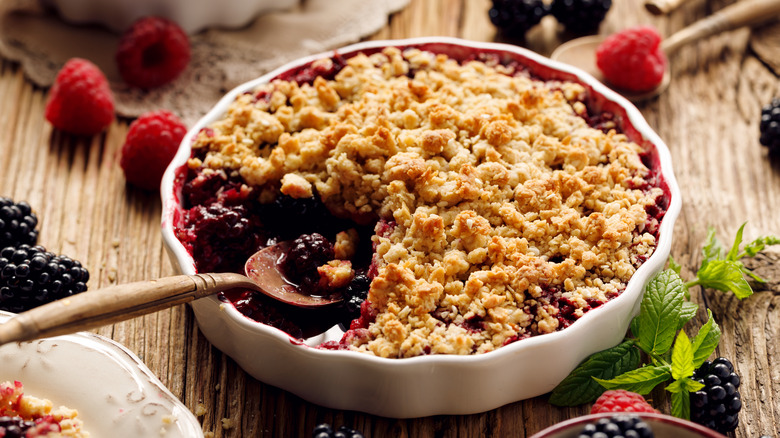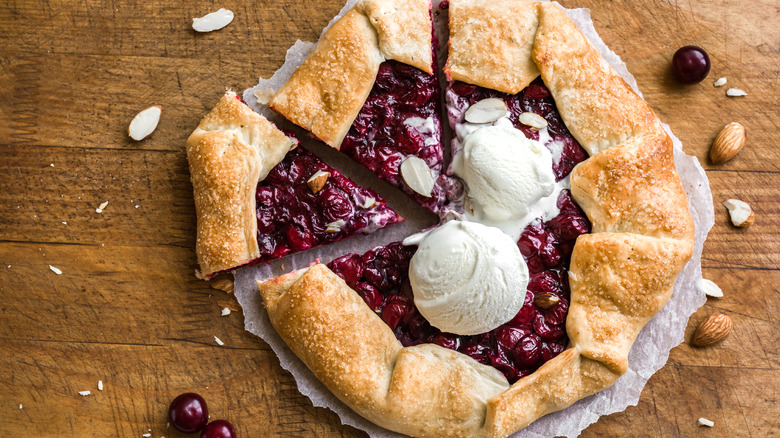The Easiest Ways To Dress Up Delicious Summer Fruit
Tired of the scorching heat and in need of some tropical relief? Summer brings juicy fruits that tantalize your taste buds and hydrate you! From succulent strawberries to luscious watermelons, nature is here to rescue you.
But, have you ever wondered how to take these summer gems to the next level? Whether you're planning a backyard barbecue, hosting a picnic in the park, or simply craving a mouthwatering treat, these easy-to-follow ideas will help you transform ordinary fruit into tempting creations. From elegant fruit salads to indulgent desserts, we'll uncover a range of recipes that will impress your taste buds and your guests.
No matter your skill level in the kitchen, these suggestions will empower you to become a fruit connoisseur. So, gather your favorite fruits, roll up your sleeves, and prepare to embark on a delightful, culinary adventure that will have you craving the taste of summer all year long.
Fruit salad
To create a delicious fruit salad, select a variety of seasonal fruits at the store. These usually include watermelon, strawberries, grapes, and pineapple. Then, wash and cut the watermelon into bite-sized cubes or use a melon baller for a more decorative touch. You can also cut the watermelon into easy, grab-and-go sticks!
Then, hull the strawberries and slice them into halves or quarters, depending on their size. Remove the stems from the grapes and consider slicing them in half. Peel and dice the pineapple into small chunks.
Finally, combine the prepared fruits in a large bowl and gently toss them together. Squeeze fresh lime juice or sprinkle some chopped mint leaves over the fruit salad. You can also experiment with different kinds of fruit or seasonings for the ideal fruit salad. Allow the fruit salad to chill in the refrigerator, as it tastes even better when served cold.
Yogurt parfait
Combining layers of sliced fruit, creamy yogurt, and crunchy granola, a yogurt parfait can be enjoyed for breakfast, a healthy snack, or a light dessert. To start, grab your favorite summer fruits, such as strawberries, blueberries, bananas, or peaches. Wash and slice the fruits into bite-sized pieces. Next, choose a yogurt that complements the fruits. Greek yogurt is an excellent choice due to its thick, creamy texture and high protein content. You can also use plain yogurt or, for a sweet tooth, flavored yogurts such as vanilla or strawberry.
Begin assembling by placing a layer of sliced fruit at the bottom of a glass or jar. Arrange them in an appealing pattern with alternating colors. On top of the fruit layer, spoon a generous dollop of yogurt. Spread it evenly using a spoon or piping bag to cover the fruits and create a creamy base. Next, sprinkle a layer of granola on top of the yogurt — try honey almond, chocolate chip, or a nutty blend. Repeat the layering process with another round of fruits, yogurt, and granola until the glass or jar is filled to your desired height. Finish the parfait by topping it with a sprinkle of granola or a few fruit slices.
According to Healthline, yogurt parfait is packed with vitamins, minerals, and fiber from fruits, and the yogurt contributes protein, calcium, and probiotics for a healthy gut. Check out this oatmeal and fresh berry parfait with Chantilly cream recipe for more yogurt parfait inspiration!
Fruit kabobs
By skewering chunks of melon, berries, and grapes onto bamboo skewers, you can create the perfect snack for picnics or parties!
To prepare fruit kabobs, select fruits for skewering, such as watermelon or cantaloupe, strawberries, blueberries, raspberries, and grapes. Fruits like these are best due to their small sizes and cut-ability. Then, wash the fruit thoroughly and pat dry. Slice the melons into chunks large enough to be skewered but small enough to eat in one bite. Make sure the berries are ripe and remove any stems or leaves. For grapes, use seedless varieties and leave them as clusters for easier skewering. Take bamboo skewers and soak them in water for about 30 minutes to prevent them from burning during grilling or broiling. (Soaking the skewers is unnecessary if you prefer to serve the fruit kabobs fresh and raw.) Next, thread the fruit chunks onto the skewers in an alternating pattern. You can mix and match the fruits, too.
Once all the fruit chunks are skewered, brush the fruit kabobs with a light glaze of honey or agave nectar for more sweetness before grilling, if desired. You can also add things other than just fruit, such as cheese for fig and halloumi skewers!
Fruit smoothies
By blending your favorite fruits into a smoothie with creamy yogurt, ice, and a touch of honey, you can have a refreshing beverage that is not only delicious but also packed with vitamins and antioxidants!
To make a fruit smoothie, choose ripe and juicy summer fruits. Options such as strawberries, mangoes, peaches, and bananas work well. Wash and prepare the fruits by removing pits, stems, or skins. Next, add the fruits to a blender with some yogurt. For a creamy and smooth texture, add some yogurt or alternatives such as almond milk or coconut milk yogurt for a dairy-free option. Add a handful of ice cubes to the blender to chill and thicken the smoothie. You can substitute some ice with frozen fruit chunks with a creamier texture. For a touch of sweetness, drizzle in a bit of honey or a sweetener of your choosing. (Don't forget, though, that the natural sugars from the fruits will also contribute to the overall sweetness of the smoothie.) Once all the ingredients are in the blender, blend well. Pause and taste the smoothie, adjusting the sweetness or thickness if needed by adding more fruit, yogurt, ice, or honey.
You can drink smoothies as a quick breakfast on the go, a post-workout refresher, or a dessert alternative. They offer endless possibilities for experimentation, and there are so many delicious fruit smoothie recipes out there that you have to try!
Fruit popsicles
Have you ever eaten popsicles by the poolside, as a post-workout snack, or as a dessert at a barbecue? Store-bought is great, but nothing beats a homemade fruit popsicle on a hot summer day. According to Feed Them Wisely, fruit popsicles are a healthier alternative as they contain no artificial flavors, colors, or added sugars. They are packed with fresh fruits' vitamins, minerals, and antioxidants for a guilt-free treat.
To make fruit popsicles, grab your favorite fruits, such as mangoes, strawberries, blueberries, raspberries, peaches, or kiwis. Wash the fruits and remove any peels, pits, and stems. Chop them into smaller pieces, then place the chunks into a blender or food processor and blend until you achieve a smooth puree. Blend the fruits for a shorter time if you want a chunkier texture. Mix in a small amount of honey, maple syrup, or agave nectar after blending.
Next, pour the fruit puree into popsicle molds. For a layered effect, pour a layer of one fruit puree into the molds, freeze it for about 30 minutes, then add another layer of a different fruit puree on top. Insert popsicle sticks or handles with the molds into the puree. Place the filled molds in the freezer and allow them to freeze completely. This usually takes around four–six hours depending on the size of the popsicles and your freezer's temperature. Once the popsicles are frozen solid, they are ready! Try this blueberry moonshine popsicles recipe for a southern taste of summer.
Grilled fruit
Just like grilled chicken, but better! Pineapple, peaches, and watermelon are excellent grilling choices because they hold up well. Preheat your grill to medium-high heat as you wash and slice the fruits. Remove the outer skin and core for pineapples, then cut into rings or wedges. Halve and pit the peaches, and cut the watermelon into thick wedges or cubes. Lightly brush the fruit slices with oil to prevent sticking and promote caramelization. Then, add a sprinkle of cinnamon, brown sugar, or a squeeze of citrus juice.
Place the fruit slices directly on the preheated grill and cook for a few minutes on each side until grill marks form and the fruit softens slightly. Avoid overcooking the fruits, which can cause them to become too mushy or lose their natural juices.
Grilled fruit can be used as a salad topping or as a side dish alongside grilled meats. They enhance the flavors of desserts, such as when pairing grilled peaches with a scoop of vanilla ice cream or using grilled pineapple in a tropical fruit salsa. Try these unique ways to use grilled pineapple!
Fruit salsa
Fruit salsa is a refreshing twist on a traditional salsa. By dicing fruits such as mango, pineapple, and kiwi and combining them with chopped mint, lime juice, and a touch of honey, you create a delicious salsa that pairs perfectly with tortilla chips or other Latin-inspired dishes.
To prepare fruit salsa, get mangoes, pineapples, kiwis, or any other ripe but firm fruits. Wash and peel the fruits, then dice them into small pieces. The dice size varies, but aim for bite-sized pieces that easily scoop onto a tortilla chip. In a mixing bowl, combine the diced fruits with finely chopped fresh mint leaves. Squeeze fresh lime juice and honey over the fruit mixture. Gently toss all the ingredients together so that the fruits are evenly coated with the lime juice, honey, and mint. Allow the flavors to meld together by refrigerating the salsa for at least 30 minutes.
Once it's ready, you can eat the salsa with chips or serve it as a topping for grilled chicken, fish, tacos, or quesadillas! Try this popular grilled pineapple salsa recipe.
Fruit bruschetta
This unique twist on the classic Italian dish can be a delightful appetizer at parties and brunches or as a light snack. With fruit bruschetta, combine flavors and textures by spreading cream cheese or ricotta on toasted baguette slices and topping them with sliced strawberries, peaches, or figs. For one example, goat cheese & strawberry bruschetta is a classic!
To make a fruit bruschetta, first slice the fruits into thin slices so that they can easily be placed on the baguette slices without overpowering the bread. If the fruits have pits or stems, remove them before slicing. Next, prepare the baguette slices by toasting them until they are golden and crispy. Then, spread a layer of cream cheese or ricotta on each slice. You can use plain cream cheese or flavored varieties such as honey or herb-infused ricotta.
Finally, place a few slices of the prepared fruits on the cream cheese or ricotta layer. For an extra touch of flavor, drizzle a small amount of honey or balsamic reduction over the fruit bruschetta. You can experiment with different fruits, cheeses, and toppings or sprinkle chopped herbs such as basil or mint!
Fruit tart
To make a fruit tart, start by preparing the tart shell. You can use a store-bought tart shell or make your own from scratch using a recipe of your choice. Once the tart shell is pre-baked and cooled, it can serve as a buttery and flaky fruit base.
Next, select your favorite fruits to adorn the tart. Strawberries, blueberries, raspberries, kiwis, and peaches are popular choices. Wash and dry the fruits, then slice them into even, thin slices. Arrange the fruit slices on the pre-baked tart shell. Start from the outer edge and work towards the center, slightly overlapping the slices. To add a glossy finish, prepare a glaze by heating apricot jam and water in a small saucepan. Stir until the jam is melted and smooth. Using a pastry brush, gently brush the glaze over the arranged fruit slices. Allow the fruit tart to chill in the refrigerator briefly to set the glaze.
Whether served as a dessert for a special occasion or as a sweet treat for afternoon tea, a fruit tart is the perfect snack! Check out these recipes for apple almond tart and roasted fig raspberry tart.
Fruit-Infused water
Fruit-infused water is a healthy alternative to sugary beverages. Adding slices of fruits such as lemon, lime, cucumber, or berries to a pitcher of water quenches your thirst and can provide essential vitamins and minerals.
Infusing water with fruits is super easy. First, select your favorite fruits and cut them into thin slices. Lemons and limes add a tangy and citrusy flavor while cucumbers provide a crisp and refreshing taste. Berries, such as strawberries, blueberries, or raspberries, contribute a sweet and slightly tart note to the water. Once you have prepared the fruit slices, add them to a pitcher filled with cold water. Allow the water to infuse with the fruit for at least an hour, or refrigerate the pitcher overnight for a more intense flavor.
The benefits of fruit-infused water are plenty! According to WebMD, fruit-infused water can encourage you if you struggle with drinking plain water, as the added flavors make it more enjoyable. You'll be off of soda pop in no time.
Fruit sorbet
You can create a sorbet in just a few simple steps by pureeing ripe fruits with sugar and freezing the mixture. First, select strawberries, mangoes, peaches, and raspberries. Wash and prepare the fruits by removing any stems, seeds, or peels and cutting them into small pieces.
Next, add the fruit pieces to a blender or food processor along with a small amount of sugar. Blend the mixture until smooth and homogeneous, ensuring that there are no lumps or chunks. Once the fruit and sugar are combined, transfer the puree into a shallow, freezer-safe container. Spread the mixture evenly in the container to ensure consistent freezing. Place the container in the freezer and set it for a few hours or until the sorbet becomes firm. During the freezing process, occasionally stir and scrape the mixture with a fork to prevent the formation of ice crystals and to maintain a smooth texture.
When it's time to serve, remove the sorbet from the freezer and let it sit at room temperature for a few minutes to soften slightly. Then, scoop the sorbet into bowls or cones. According to Healthy Food Guide, sorbet is a healthier alternative to traditional ice cream as it is lower in fat and calories. You can eat sorbet as a light dessert, a palate cleanser between courses, or a treat on a hot summer day.
Fruit brûlée
This simple, sophisticated dessert involves sprinkling a layer of sugar on top of halved fruits and using a kitchen torch to caramelize the sugar.
To prepare fruit brûlée, select ripe and flavorful fruits that complement caramelization. Bananas and grapefruits are popular because of their natural sweetness and ability to withstand heat. Depending on personal preference and seasonal availability, you can also use other fruits, including peaches and plums. Once you halve the fruits, sprinkle an even layer of granulated sugar over the exposed flesh. Using a kitchen torch, gently apply heat to the sugar, moving the flame in circular motions until the sugar melts and turns into a golden-brown caramelized layer. The torch's high heat causes the sugar to crystallize, forming a thin, crackly crust on top of the fruit.
You can serve the fruit brûlée as a light dessert with a dollop of whipped cream, a scoop of vanilla ice cream, or a drizzle of chocolate sauce.
Fruit pavlova
Fruit pavlova combines a delicate, meringue base with luscious whipped cream and fresh fruit. It's summer in your mouth, but you can also enjoy it any season, all year long!
The foundation of a fruit pavlova is a meringue base. To make the meringue, whisk egg whites and salt until soft peaks form, then add the sugar and mix to create a light and airy texture. Next, you'll add cornstarch, lemon juice, and vanilla extract and mix once more. Spread the mixture into a round shape on a baking sheet and bake until crisp on the outside and soft and marshmallow-like on the inside. Once the meringue is ready, whip cream until thick and fluffy and add to the center of the meringue. Arrange various colorful and juicy fruits, such as strawberries, kiwis, blueberries, raspberries, or sliced peaches, on top of the whipped cream.
Fruit pavlova is a wonderful dessert choice for summer gatherings, garden parties, picnics, or formal dinners. If you're stuck on recipes, try this raspberry pavlova recipe, where we provide a more detailed, step-by-step guide on how to make fruit pavlova.
Fruit crumble
This rustic dessert is effortless to prepare, requiring simple ingredients and minimal effort — you're just combining sliced fruits with a delightful crumble mixture and baking it!
To begin, choose your fruits. They can be apples, pears, berries, peaches, or a combination of fruits. Slice the fruits into bite-sized pieces and toss them with some sugar. Next comes the crumble mixture: For this, combine oats, flour, butter, and sugar in a separate bowl. Once the fruit and crumble components are ready, layer the fruit mixture in a baking dish and evenly sprinkle the crumble mixture on top. The fruit juices will bubble and mingle with the crumble during baking. Bake the fruit crumble in the oven until the top is golden brown and the filling is bubbling and tender.
Serve the fruit crumble warm, either on its own or with a scoop of vanilla ice cream or a dollop of whipped cream.
Fruit galette
To prepare a fruit galette, select a medley of fresh fruits in season, such as berries, peaches, apples, and pears in the summer. Slice the fruits into even pieces, ensuring that they are thin enough to allow for even cooking.
Next, prepare the pastry dough. (You can use a store-bought pie crust or make your own from scratch.) Roll the dough into a rough circle about 12–14 inches in diameter on a lightly floured surface. Place the rolled-out dough on a parchment-lined baking sheet and arrange the sliced fruits in the center, leaving a border around the edges. Sprinkle the fruit filling with a touch of sugar.
Then, gently fold the edges of the pastry dough up and over the fruits, pleating as you go. Bake the fruit galette in a preheated oven until the pastry is golden brown and the fruits are tender and bubbling. Once baked, allow the galette to cool slightly before serving. You can eat the fruit galette at room temperature with a scoop of vanilla ice cream or whipped cream.

